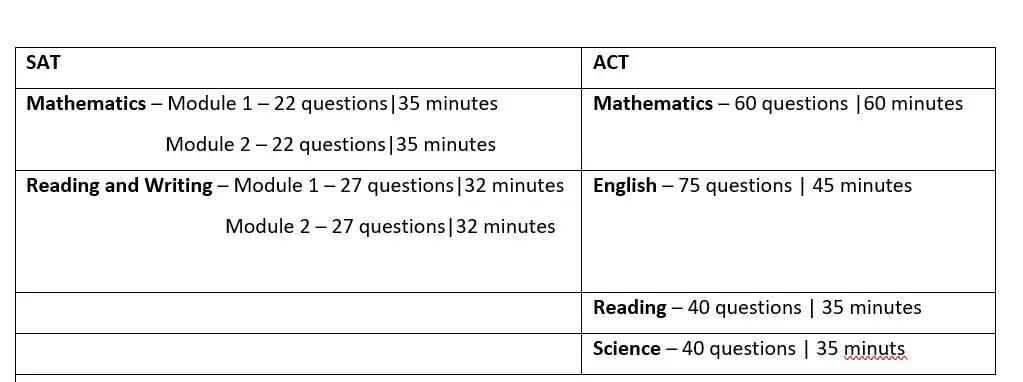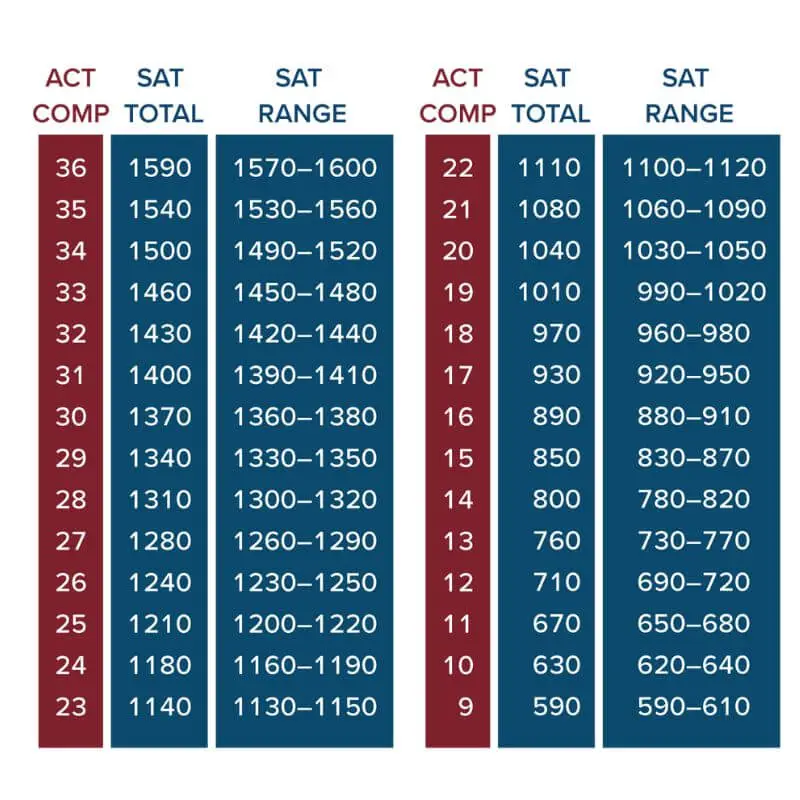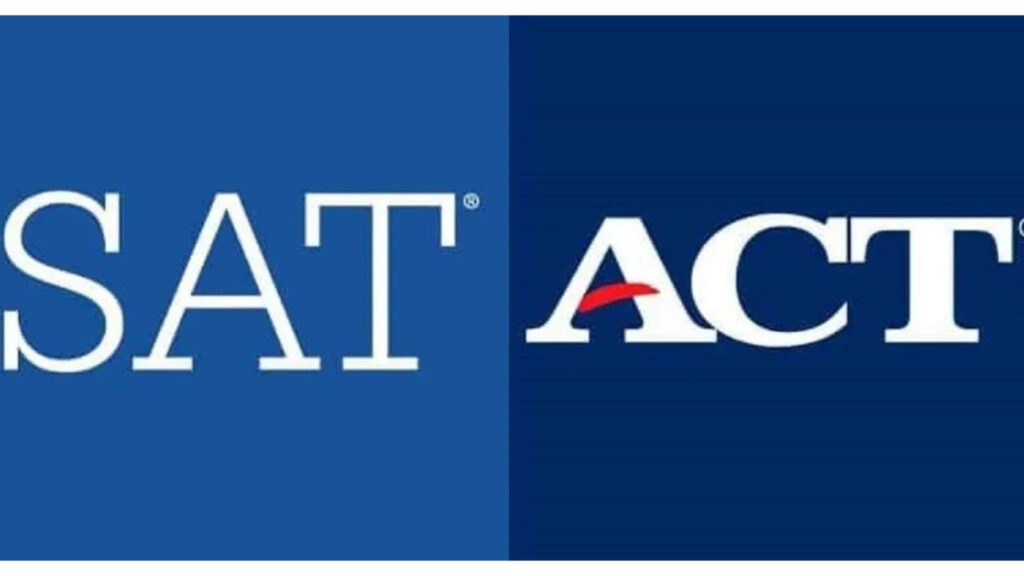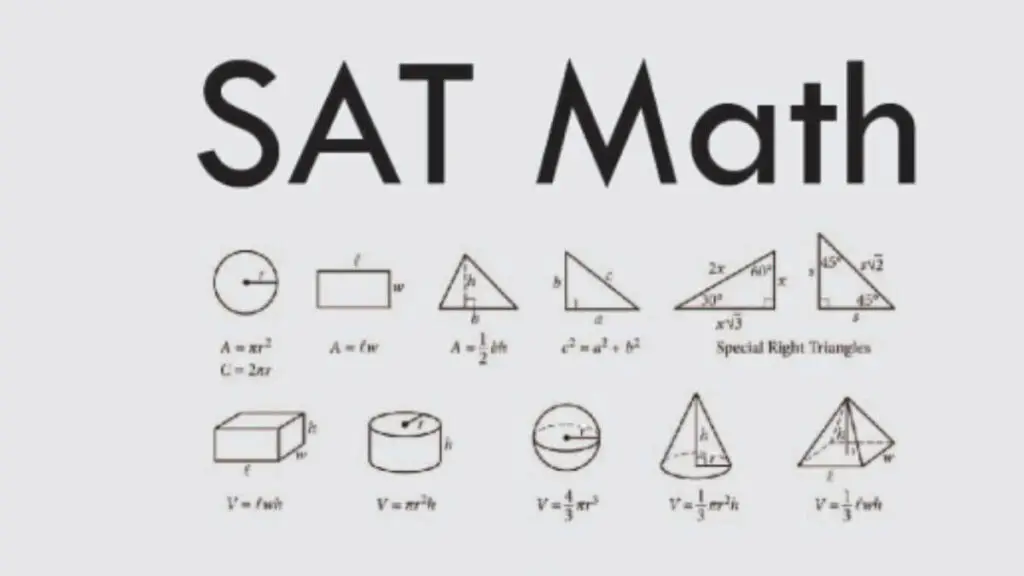Key Differences Between SAT and ACT
Choosing between the SAT and ACT is a critical decision for students planning to apply to college. While both exams are widely accepted by colleges and universities in the United States, they differ in format, content, and focus. This article highlights the major differences between SAT and ACT to help students determine which test best suits their strengths and preferences.
Table of Contents
1. Test Structure

- SAT:
- Evidence-Based Reading and Writing (ERW)
- Mathematics (with and without a calculator)
- No Science section
- Total duration: 3 hours
- ACT:
- English
- Mathematics
- Reading
- Science
- Optional Writing (Essay) section
- Total duration: 2 hours 55 minutes (without essay) or 3 hours 35 minutes (with essay)
2. Content Focus
- SAT:
- Focuses more on reasoning, problem-solving, and critical thinking.
- Emphasizes algebra, data analysis, and complex word problems in math.
- Reading passages tend to be more abstract and analytical.
- ACT:
- Focuses more on straightforward, curriculum-based questions.
- Includes a dedicated Science section testing data interpretation and analytical skills.
- Math covers a broader range, including geometry and trigonometry.
3. Scoring System
- SAT:
- Total score range: 400–1600
- ERW: 200–800
- Math: 200–800
- No penalties for wrong answers.
- ACT:
- Total score range: 1–36
- Each section is scored on a 1–36 scale.
- Final score is the average of all section scores.
- No penalties for wrong answers.

4. Time Management

- SAT:
- Allows more time per question, making it favorable for students who prefer deep thinking and analysis.
- Total questions: 154
- ACT:
- Faster-paced with more questions in less time, suitable for students who work quickly.
- Total questions: 215
5. Essay (Optional)
- SAT:
- The essay section was discontinued in 2021.
- ACT:
- Includes an optional essay that evaluates writing and analytical skills.
6. Calculator Policy
- SAT:
- Divides the math section into two parts: one allows calculator use, and the other does not.
- ACT:
- Allows calculator use for the entire math section.
7. Science Section
- SAT:
- Does not include a dedicated science section. However, science-related questions may appear within reading passages.
- ACT:
- Features a Science section focused on data interpretation, research summaries, and conflicting viewpoints.
8. Ideal Test Takers
- SAT:
- Suitable for students who excel in analytical thinking, problem-solving, and math reasoning.
- Preferred by those who need more time to process questions.
- ACT:
- Ideal for students who perform well under time pressure and prefer direct questions.
- Beneficial for students strong in science and data analysis.
9. Popularity and Availability

- Both exams are widely accepted by colleges across the U.S. and internationally.
- The SAT is more popular on the East and West coasts, while the ACT tends to be favored in the Midwest and Southern states.
Conclusion
There are significant differences between SAT and ACT. The SAT and ACT offer unique formats and question styles, catering to different types of learners. While the SAT emphasizes analytical reasoning and problem-solving, the ACT prioritizes speed and breadth of knowledge, including science. Students are encouraged to take practice tests for both exams to determine which aligns better with their strengths and preferences. Regardless of the test chosen, preparation and practice remain key to achieving a competitive score. Check here for more information on the differences between SAT and ACT
For more information about the SAT exam, click here





You are so interesting! I don’t suppose I’ve read a single thing like that
before. So great to discover somebody with gsnuine
thoughts on this sbject matter. Really.. many thanks
for starting this up. This web site is one thing that is required on the web,
someone with some originality!
Thank you for taking out time to read this post. We have more posts on IELTS and other exams